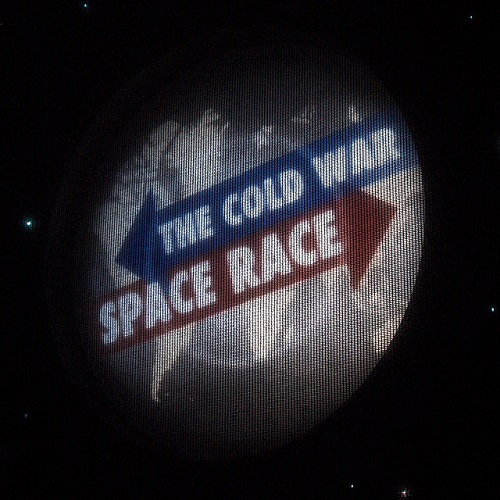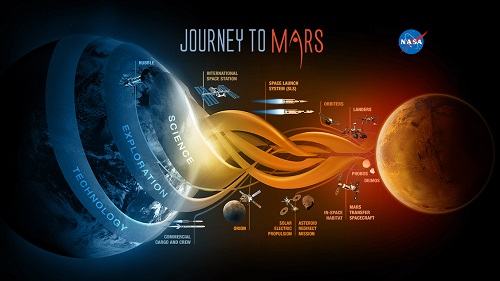Difference between Cold War Space Travel and Modern Space Travel
The space is a fascinating and mysterious place that men and scientists always dreamed to explore. Ancient populations used to send ceremonial rockets to the space, and the first real rockets were developed in the 20th century by the three pioneers of space engineering: the American Robert Goddard, the German Hermann Oberth and the Russian Konstantin Tsiolkovski.
During World War II, missiles and rockets were used as weapons and, after the end of the war, both the United States and the Soviet Union created their own missile programs – thus initiating the so called “space race”. The Soviet Union launched Sputnik 1 – the first artificial satellite – in 1956 and sent the first man to the space – Lt. Yuri Gagarin – in 1961. The Americans replied with the creation of the National Aeronautics and Space Administration (NASA) and definitely won the space race when Neil Armstrong stepped onto the moon in 1969.
After the end of the Cold War, satellite communications, monitors and drones became common and widespread and, today, men have explored and studied most of the space with all its celestial bodies, planets and stars.
Since the 1950s-1960s, space travel has deeply changed and improved; furthermore, while competition among major powers remains, the space is no more the arena were Cold Wars are fought. Today, travelling to the space is safer, more common, less risky and much more comfortable. The main differences between Cold War space travel and modern space travel are:
- Politics;
- Comfort;
- Safety; and
- Goals.
Politics
Following the end of World War II – one of the deadliest conflicts in history – the United States feared a possible expansion of the communist ideology promoted by the Soviet Union. As such, President Henry Truman introduced the so-called “containment policy” in order to prevent the spread of communism and to “protect free peoples”. While the two superpowers never directly confronted on a battlefield – although one may argue that they did so during the Vietnam War and the Korean War – the Cold War was mainly fought in the field of nuclear armament and in the space.
In fact, the Soviets kicked off the “space race” by sending Yuri Gagarin to the space on April 12, 1961. The Russian Lieutenant circled the Earth once during a 108-minute trip on the small craft Vostok 1, which contained ten days-worth of food and provisions in case something went wrong. While the craft was over Africa, the descent of the pilot began but, as there were no engines to ensure the safety and slow the re-entry of Vostok 1, Gagarin was forced to eject and parachute four miles above the ground. However, the Soviets only revealed this detail in 1971 because the Fédération Aéronautique Internationale (FAI) had decided that the pilot had to land with the spacecraft in order for the mission to qualify as the first successful human space flight.
The Americans replied only three weeks later when, on May 5, 1961, Alan Shepard was sent to the space in a Mercury capsule named Freedom and orbited around for 15 minutes. While the Soviets were the first ones to officially send a man to the space, the Americans definitely won the “space race” when Neil Armstrong set foot on the moon in 1969.
While during the Cold War spaceflight was a matter of national pride, today the space has become an international arena; as such, bilateral and multilateral cooperation is needed to enhance the research and improve technical capabilities. International efforts in this field include:
- Creation of the International Space Station where European, Canadian, Japanese, American and Russian space agencies have been operating for over 16 years;
- Joint research projects to enable men to travel to Mars;
- Joint creation of a map for space exploration beyond the Earth;
- Bilateral cooperation between NASA and the European Space Agency; and
- Creation of the Committee on Earth Observation Satellites and the Group on Earth Observations – international fora where data, policies and observations are openly discussed.
These partnerships and the increasing cooperation in the field of space travel and research are necessary to deepen our knowledge of the universe, to improve technical capabilities, to perfect spacecraft, and to promote technological innovations. Furthermore, working within diverse and multicultural teams provides the opportunity of tackling problems and facing difficulties from different perspectives – thus increasing the chances of finding suitable and innovative solutions.
Comfort
When Yuri Gagarin was first sent to the space, he did not have control over the spacecraft and comfort was not a priority. While the first man to orbit around the Earth had to eject and parachute before landing, today astronauts enjoy many comforts and amenities during their travels to space. In fact, in a spacecraft we can find:
- A restroom – with a curtain that can be rolled up to ensure privacy;
- Cabinets and drawers equipped with Velcro strips to prevent objects from floating around;
- A kitchen with storage compartments, food, warmers, hot and cold water outlets, and trays;
- Exercise equipment (including exercise bikes);
- Laptops;
- Smoke detectors;
- Fire extinguishers;
- Blankets and towels; and
- Breathing apparatus.
As space agencies are trying to find the perfect formula to lengthen space travels, spacecraft need to become more comfortable and suitable for long journeys.
Safety
During the Cold War – when the first men were sent to the space – astronauts barely had control over their spacecraft and were not sure whether they could eat and drink once in the orbit. Today, astronauts can eat, drink, exercise and have full control over the spacecraft. Furthermore, naïve doubts concerning the safety and stability of spaceships have been solved.
However, as today the focus is on Mars and astronauts can spend several months working in space, new concerns are arising with regard to the effects of radiation exposure and bone loss. While technology has improved to the point that privates and citizens can buy a ticket to the space (for about 200,000$), biological issues persist. Today, spaceships are incredibly safe and sophisticated but the main issue of concern is the effect of space travel on the human body.
Goals
During the Cold War, the main goal was to boost national pride by sending the first man and the first spacecraft to the space. Indeed, scientists and astronauts were genuinely interested in the research and in exploring the space; yet, the American and the Soviet governments invested in such projects in order to underline their primacy and superiority.
Today, the increased cooperation and the numerous partnerships among different countries have shifted the focus form national ego and have promoted the emergence of joint research projects. While the European Space Agency had promoted the idea of a “moon village”, NASA’s main priority remains Mars. Today, different countries and various space agencies are cooperating to send a first orbital mission and the first astronauts on the planet – with the aim of finding evidence of past life on Mars.
Summary
In the 1960s, the United States and the Soviet Union competed in the space to push the boundaries of space travel and to set record of “first country/first man in the space”. In fact, after the end of WWII, the two superpowers engaged in the so-called Cold War – which was mainly fought in the space, in the field of nuclear armament and through the creation of strategic alliances and partnerships. However, when the Cold War ended in 1991 following the collapse of the Soviet Union, space travel became an international matter. Hence, today, several space agencies and different countries collaborate to push the boundaries of man’s exploration of space even further. In the past fifty years, space travel has changed and improved. The main differences between Cold War space travel and modern space travel are the following:
- In the 1960s, the United States and the Soviet Union developed missile programs to set new records and maintain (or acquire) their supremacy. Today, space travel is not a competition. While national pride remains, various countries work together on joint projects and share the use of the International Space Station;
- In the 1960s, astronauts did not have control over their spacecraft (Yuri Gagarin had to jump off and parachute as the Vostok 1 had no engines to ensure a safe landing) and the spaceships were not particularly safe. Today, as spaceships are safe, reliable and robust, space travel is safer and the main concerns regard the effects of radiation exposure on the human body;
- In the 1960s, space travel was not particularly comfortable – luckily, the first trips to space did not last longer than few hours. Today, spaceships have all kinds of amenities, including exercise equipment, musical instruments, laptops and tasty food; and
- In the 1960s, the main goal of the United State and the Soviet Union was to send the first man to the space and to prove their superiority. Today, the main goal is to expand and push the boundaries of space travel and to send the first mission to Mars.
- Difference Between Michelle Obama and Melania - January 29, 2019
- Difference Between Trump and Modi - December 4, 2018
- Difference Between Carbon Tax And Cap And Trade - December 4, 2018
Search DifferenceBetween.net :
Leave a Response
References :
[0]5 Changes in Space Travel Since Yuri Gagarin's Flight, National Geographic, available at http://news.nationalgeographic.com/news/2013/04/130412-space-travel-technologies-yuri-gagarin/
[1]Neil Armstrong, History, available at http://www.history.com/topics/neil-armstrong
[2]What's on the Inside of a Spacecraft, Bright Hub, available at http://www.brighthub.com/science/space/articles/114400.aspx
[3]When We Explore Space, We Go Together, Slate.com, available at http://www.slate.com/articles/technology/future_tense/2017/07/why_a_u_s_russia_cybersecurity_unit_is_such_a_stupid_idea.html
[4]Yuri Gagarin: First Man in Space | The Greatest Moments in Flight, Space.com, available at https://www.space.com/16159-first-man-in-space.html
[5]https://www.flickr.com/photos/paulrobertlloyd/4141282363/
[6]https://futurism.com/its-official-were-going-to-mars/


